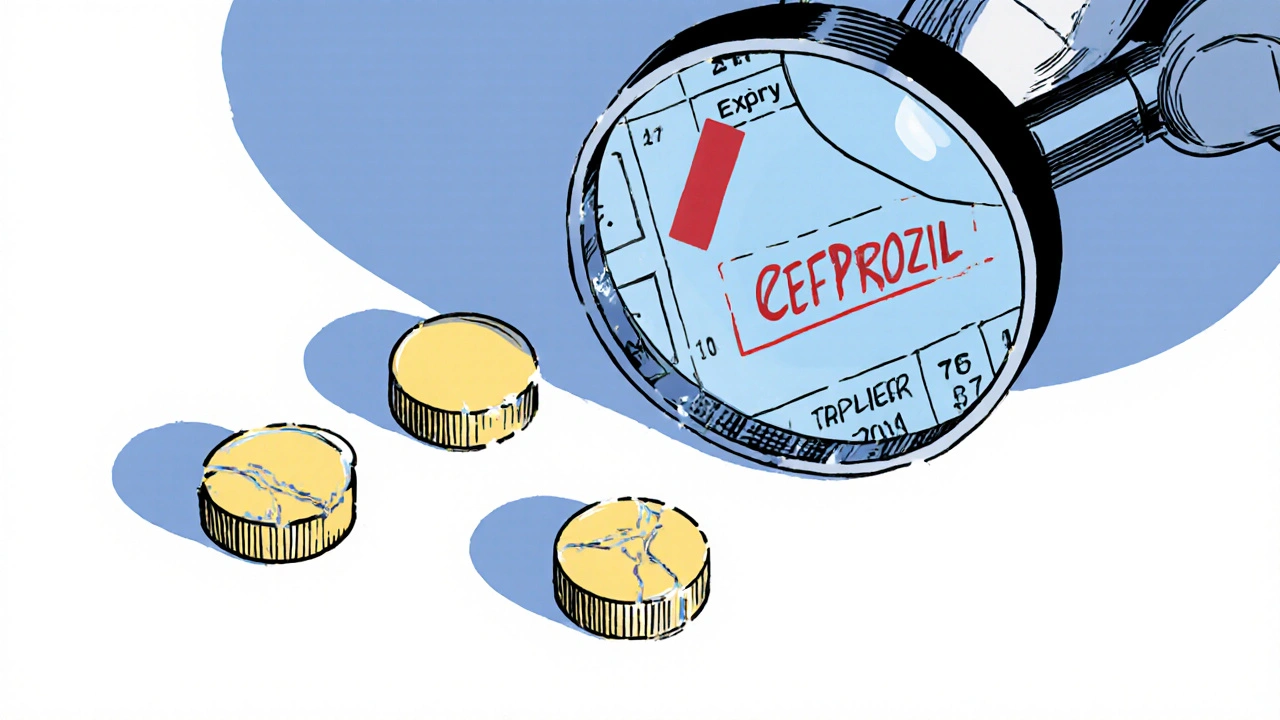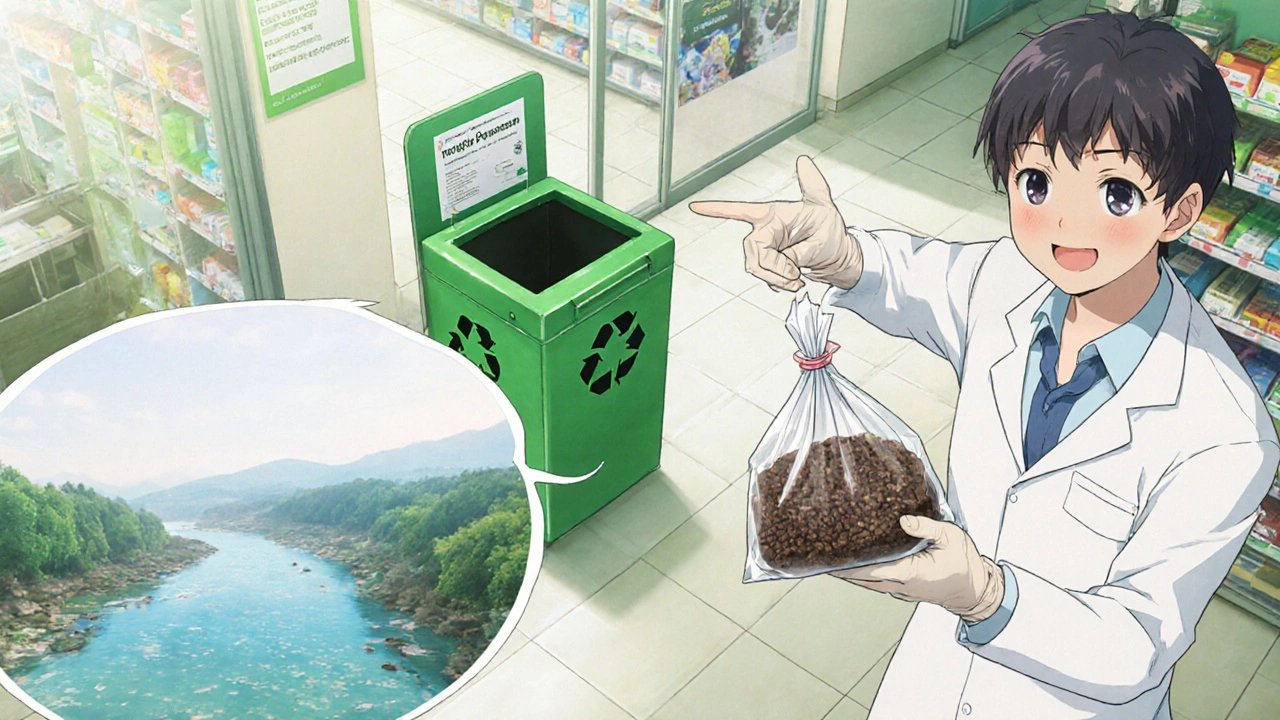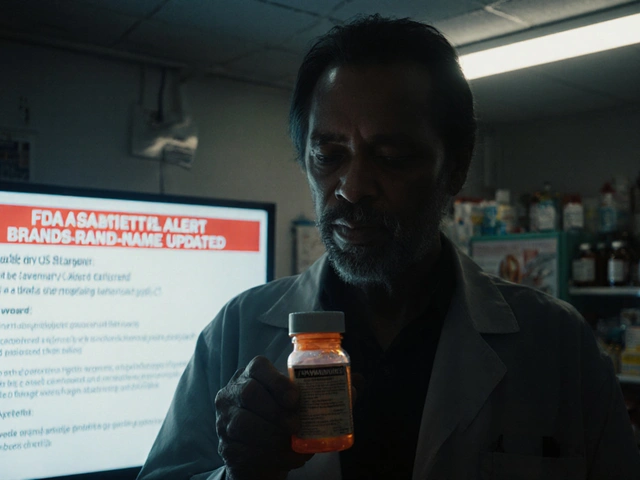Whether you just filled a prescription or have a leftover bottle, knowing how to keep Cefprozil an oral cephalosporin antibiotic used for ear, throat, skin and urinary infections safe is essential. Improper storage can reduce potency, and the wrong disposal method can harm the environment. This guide walks you through the steps you need to store the drug correctly and discard it responsibly.
Why Proper Storage Matters
Antibiotics are chemically active compounds. Exposure to heat, moisture, or light can break down the drug’s molecular structure, making it less effective. If you take a weakened dose, the infection may not clear, increasing the risk of antibiotic resistance-a public‑health threat recognized by the World Health Organization. Moreover, degraded medicines can produce toxic by‑products that pose safety hazards to anyone handling them.
Recommended Storage Conditions for Cefprozil
Below are the key parameters you should monitor:
- Temperature: Keep the tablets between 68°F and 77°F (20°C‑25°C). A room temperature environment that does not exceed 86°F (30°C) is ideal.
- Humidity: Store in a dry place. Relative humidity above 65% can accelerate degradation.
- Light exposure: Use the original container; opaque blister packs block UV light that can break down the active ingredient.
- Original packaging: Keep the bottle tightly closed. The child‑proof cap also helps maintain a stable environment.
In Australia, the Therapeutic Goods Administration (TGA) regulates medicines and provides storage guidance for consumers recommends checking the label for any specific storage notes. If you travel, use a portable cooler bag for extreme climates, but avoid freezing the tablets.
How to Spot a Degraded Batch
Before you take a dose, perform a quick visual check:
- Look for discoloration - tablets should be white to off‑white. Any yellowing or spotting signals possible breakdown.
- Feel for moisture - tablets should be dry and crumbly. Soft or sticky tablets suggest humidity exposure.
- Check the expiration date the date printed on the label after which the manufacturer does not guarantee potency. If the date is past, discard the medication even if it looks fine.
If any of these signs appear, do not use the medication. Take it to a pharmacy for safe disposal.

Safe Disposal Options
When you have leftover Cefprozil, choose a method that protects people and the planet.
| Method | Environmental Impact | Convenience | Regulatory Compliance |
|---|---|---|---|
| Pharmacy Take‑Back Program | Low - medicines are incinerated in certified facilities | High - many pharmacies have drop boxes | Fully compliant with FDA guidelines for safe medication disposal |
| Household Trash (after rendering non‑reusable) | d>Medium - risk of leaching if not mixed with waste | Very high - no extra trip needed | Allowed if pills are crushed, mixed with undesirable material, and placed in sealed bag |
| Flushing down the toilet | High - antibiotics enter water systems, affect aquatic life | Easy but discouraged | Not recommended by FDA |
The safest route is the pharmacy take‑back program. In major Australian cities, you’ll find medicine take‑back bins secure containers at pharmacies and some supermarkets for unwanted medicines. If a nearby pharmacy isn’t available, you can contact your local council’s hazardous waste facility the place that handles pharmaceutical waste according to state regulations for a drop‑off appointment.
Step‑by‑Step Household Disposal (When Take‑Back Isn’t an Option)
- Wear disposable gloves to avoid direct contact.
- Remove the tablets from the original bottle and crush them into a fine powder using a spoon.
- Mix the powder with an unpalatable substance such as coffee grounds, cat litter, or dirt.
- Place the mixture in a sealable plastic bag, squeeze out the air, and seal it tightly.
- Throw the sealed bag into your regular household trash bin.
- Wash your hands thoroughly after handling the medication.
Never place tablets in a sink or toilet unless the label explicitly says it’s safe to do so-Cefprozil is not one of those exceptions.

Special Considerations for Certain Groups
Parents: Children can be curious. Keep the original bottle out of reach, and involve them in the disposal process only when you’re supervising. Use child‑proof caps and store in a high cabinet.
Elderly: Vision issues can make reading expiry dates harder. Help them set a calendar reminder to check the date every month.
Travelers: If you’re traveling abroad, check the destination country’s disposal regulations. Some nations have stricter rules on flushing medications.
Environmental Impact of Improper Disposal
Studies from the Australian Research Council national funding body that supports environmental research show that trace amounts of antibiotics in waterways promote resistant bacteria in rivers. These bacteria can travel downstream and enter drinking water sources. By following the guidelines above, you help keep ecosystems healthy and protect future patients from hard‑to‑treat infections.
Quick Checklist Before You Toss
- Verify the expiration date.
- Inspect tablets for color or texture changes.
- Confirm storage conditions have stayed within 20‑25°C and low humidity.
- Choose a disposal method: pharmacy take‑back > hazardous waste facility > sealed trash.
- Document the disposal date for personal records.
Follow this checklist and you’ll keep your medicine safe while doing your part for the environment.
Can I flush Cefprozil down the toilet?
No. Flushing Cefprozil can introduce active antibiotics into water supplies, encouraging resistant bacteria. Use a pharmacy take‑back program or the sealed‑trash method instead.
What temperature range is safe for storing Cefprozil?
Store it at 20‑25°C (68‑77°F). Avoid places that can exceed 30°C (86°F) for extended periods, such as a car dashboard.
Is it okay to keep Cefprozil in the bathroom cabinet?
Only if the cabinet stays dry and the temperature stays within the recommended range. Bathrooms often have high humidity, which can shorten shelf life.
How do I know if my leftover Cefprozil is still effective?
Check the expiry date, look for any discoloration, and feel for moisture. If you have any doubt, discard it safely and get a new prescription.
Where can I find a pharmacy take‑back bin near me?
Most major pharmacy chains in Australia have drop‑off boxes. Visit the website of your local pharmacy or call the Australian Pharmaceutical Society for locations.






Jonah O
October 24, 2025 at 21:25
Ever wonder why big pharma never tells you the full story about drug storage? They hide the fact that most antibiotics are weaponized chemicals that can turn your bathroom into a covert lab. If you keep Cefprozil in a humid bathroom the molecules get shaken up, losing potency and releasing nano‑particles that slip into the water supply. The government‑sanctioned take‑back boxes are just a smokescreen to make you think you’re doing good while they track the waste. You should lock the bottle in a metal box and bury it in a dry spot, away from any surveillance drones. Keep the temperature below 70°F, otherwise the heat‑induced breakdown accelerates like a runaway reaction. Remember, every degraded pill you toss in the trash adds a silent toxin to the ecosystem that’ll come back to bite us later. Stay vigilant and question every label.